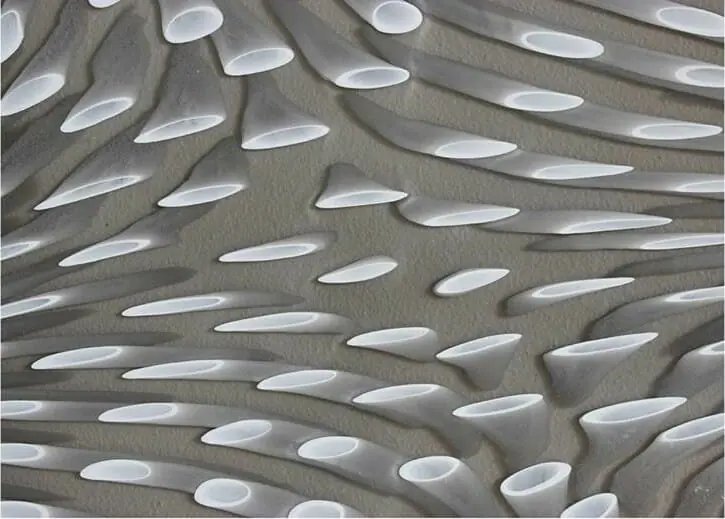Julie Trudel is a Montreal-based artist who received the William and Isabel Pope Artist’s Residency at NSCAD University this term.
In the summer, Trudel arrived at NSCAD, where she was given a private studio space to create her series “Ivory Black and Titanium White Project: Transparency and Distortion.” Her work is currently on display at the Anna Leonowens Gallery in Gallery 1, located just off of the Granville Campus at NSCAD University. Her show runs from Nov. 16-28.
As the viewer walks into the gallery, there is an overwhelming feeling of precision and perfection. Trudel’s work is done on Plexiglas, where the paint is poured over the surface for the first layer, drops of black or white paint dots for the second layer, and a transparent medium for the third layer. Trudel bends the Plexiglas to allow the paint to flow and move off of her non-traditional canvas. The dots move in all sorts of directions — even off of the work, leaving behind a transparent trail.
There are six works in the gallery and each is unique. Some are black on black, white on white, or a mixture of the two. Each work is large, but each work is spaced appropriately to one another in the gallery.
Trudel used to consider using natural light to enhance her work, but she now uses lights in the gallery to cast interesting shadows on the wall. Some of the shadows cast the dots from her paintings and distort them even more, adding to the wow factor.
Trudel also bends the whole Plexiglas board after the paint has dried in the plastics lab at the Port Campus of NSCAD University. This allows the work to have three panels, one which sits against the wall and the other two protruding off of the back panel showcasing its three dimensions.
The work comes off of the wall, engaging the space in a sort of sculptural way. The work is interactive, in the sense that the viewer must walk around the work to see its reflective, mirror-like qualities. You will not see yourself in these reflections, but you will see a time lapse of movement from the pouring and the dots.
All of the work Trudel does for this project is in black and white, giving a sophistication to the simplicity of color.
Trudel’s work tends to have an abstract approach. Some may think the work is digital, but it is all hand poured. The dots are eager to move off of the painting during the bending process, which can make interesting shapes and motions. Trudel’s work pushes the boundaries of painting and questions the reality of what we can do with a certain type of medium.
Although her work is three-dimensional, Trudel does not consider her paintings to be sculptures: they have and always will be paintings.


Recent Comments